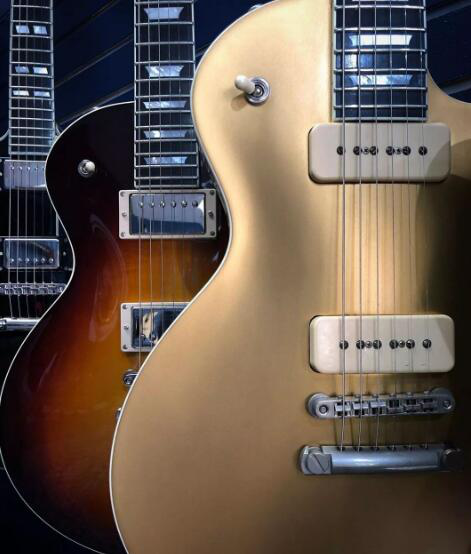- Introduce
- Tone quality
- Factor
- PDF Download
 PDF
PDF

The “sound” of a guitar is very subjective, but why is there an objective price? What is the sound quality that the salesperson at the guitar store told you? What is good or bad?
To pick the guitar sound, the most basic thing is to distinguish the volume, sound quality and tone. What beginners often don’t understand is volume and sound quality. The guitar shop salesman holds two identical brands, materials, and models, but the different sizes of ukulele are simultaneously played to the guests, and the ukulele pointing to the big branch said: “You listen, this voice is relatively wide. The sound line is better, the level is higher, so it is more expensive.” These are specifically said for beginners.
In this case, the size of the sound is only because the guitar body is large, and the resonance is of course larger. Since the guitar body is large, the materials are of course more, and the price is more normal, which has nothing to do with sound quality. A yellow duck that is not textured if it is magnified 100 times and does not become a textured yellow duckling.
The electric guitar volume is also the same, the size sound has nothing to do with the sound quality. In fact, if the wood and workmanship of the guitar is not good enough, it is hard to listen to it with high-powered pickups and hard-speaking speakers. It is as if the person who can sing is comfortable with or without amplifying, and the person who does not sing is magnified with a microphone, which is to rape the audience’s ears.
Of course, do you say that the sound of the big barrel with the high-powered pickup/speaker will affect the “tone”? Absolutely! But what I am saying here is that the “quality” of the sound does not change too much. Many wood sound lines, guitar personality does require a large enough volume to hear the details. The concept is similar to the small screen of the same quality. Many female stars seem to have better skin (covering the shortcomings). The big screen will see a lot of actress wrinkles (magnification disadvantages). But the bad sound is also bad even magnified.
The most confusing is the sound quality and tone. I often see a bunch of people mistake the sound quality as a sound quality. In the end, it is only subjective to choose the style of your love. Of course, this is one of the rhetoric of the guitar shop. For example, the low frequency is more mad, the double coil pickup is rock and roll, and the mahogany is resonating…
“Voice” is like “style”. The height is short or tall, the weight is thin or fat, the rock and roll, the hip-hop style, the fashion style, the nightclub style, the country style… that are all subjective aesthetics.
Some people like clear high frequency, some people like wood taste more, some people like the front pickups, some people like the rear pickups… This type of choice has nothing to do with good or bad, and it has nothing to do with the price. You have to choose the one that suits you and then what you love. It is definitely not suitable to say that r spending more money means good. The style is subjective and there is nothing good or bad.
As for “sound quality”, there are more objective criteria. There is a saying in the fashion circle: texture is the composition of a series of details. Take the branded bag’s pirated A, B, C goods, the higher the level, the better. Car edge, stitching, fabric quality, zipper, joints, all the details of the total determines the value of the finished product.
Online often see a lot of guitars called “handmade”, the price is unexpectedly cheap. On the contrary, many brands of production line guitars are much more expensive. But when you play down, hey! The sound on the production line sounds better? That is the difference in the details of the workmanship. Joining, baking varnish, wood, adjustments, etc. are all learning, which will seriously affect the details of the sound. So don’t have any single myth: For example, what material is good, what wood sound must be sweet, and what EMG is crazy must be mad – Sound composition is a system. Be sure to play it yourself and open your ears and listen carefully.

Finally, the sound quality is easily confused. Voice, volume, appearance, feel, speaker, hand effort, many factors will affect your judgment. It’s hard to identify good or bad before your ear has been tempered for a few years. It is best to find an experienced master to accompany you to buy a guitar.
There is a very rough/fast way to identify the sound quality for your reference. Without considering the volume and tone (personality), your six strings can’t be dry and flat, especially the intermediate frequency. The mid-range of a good guitar is usually stable and solid, and the good wood resonance is also more stable and longer. Even if the rotten guitar adds a lot of reverberation, it still can’t hide the dryness of the intermediate frequency. A good guitar can have a full texture without opening the effect. Remember, stare-tight-medium-frequency.
 Pick a guitar, the basics are to clearly distinguish the volume, sound quality and tone PDF
Pick a guitar, the basics are to clearly distinguish the volume, sound quality and tone PDF